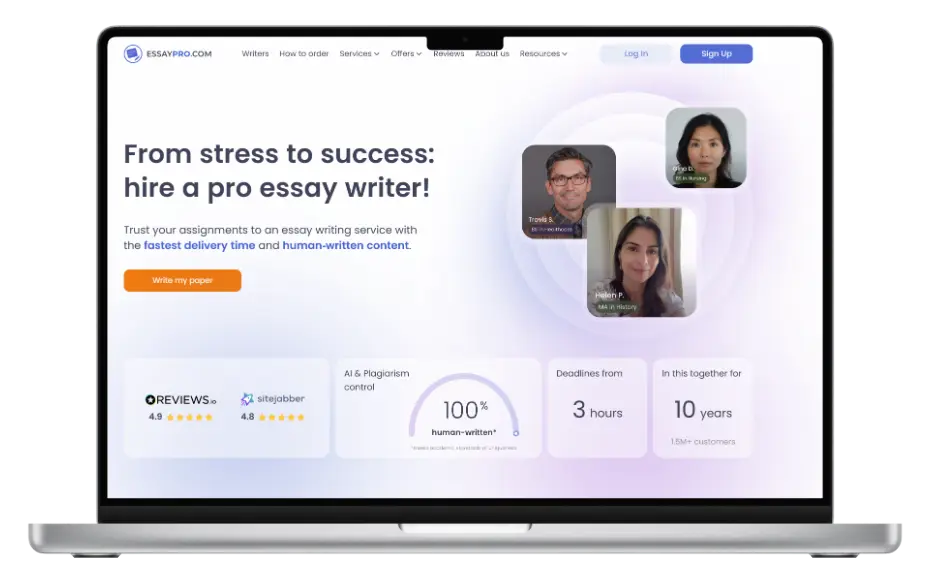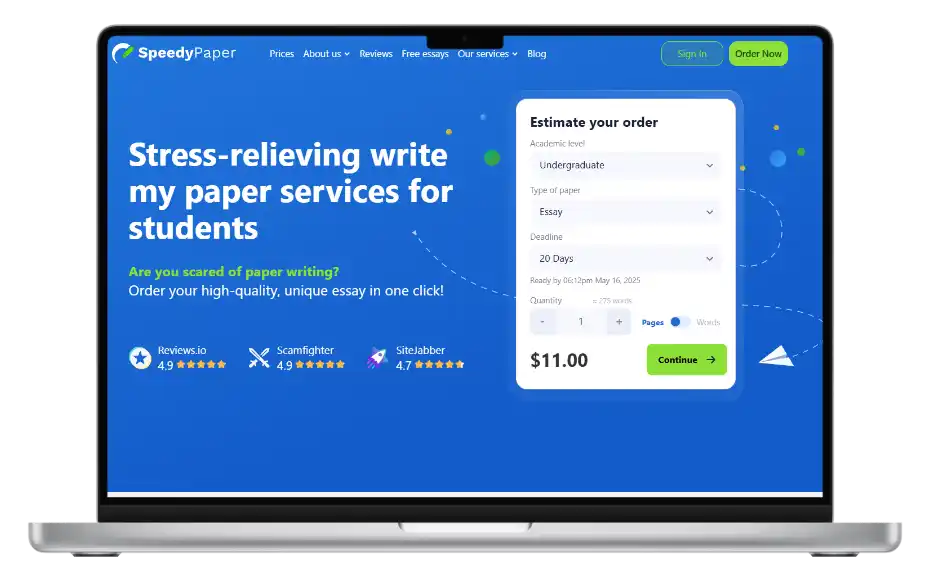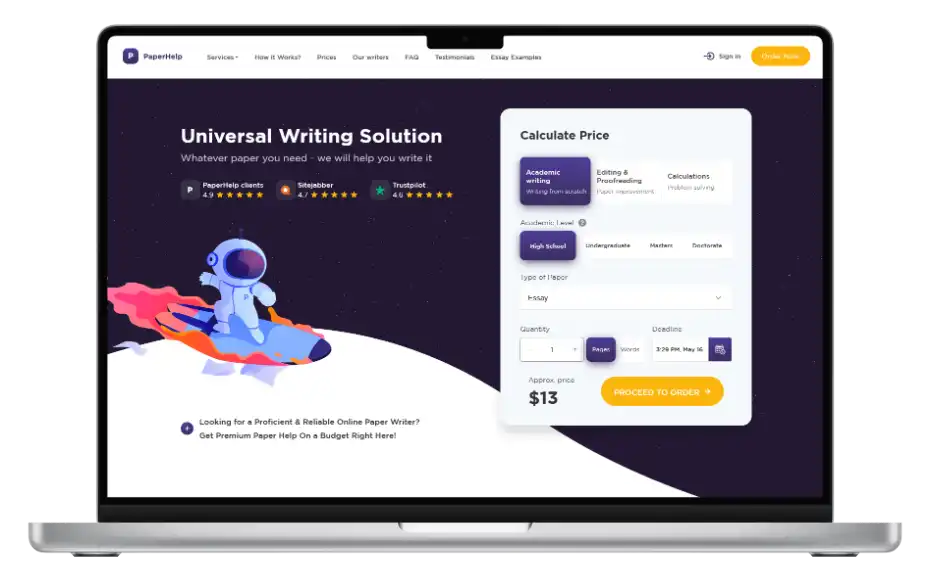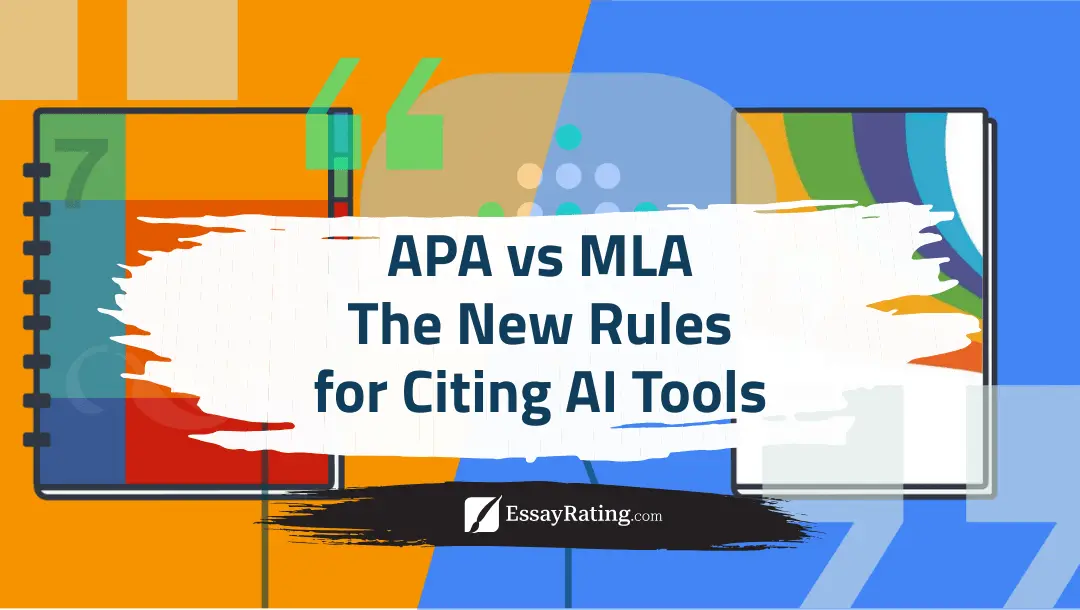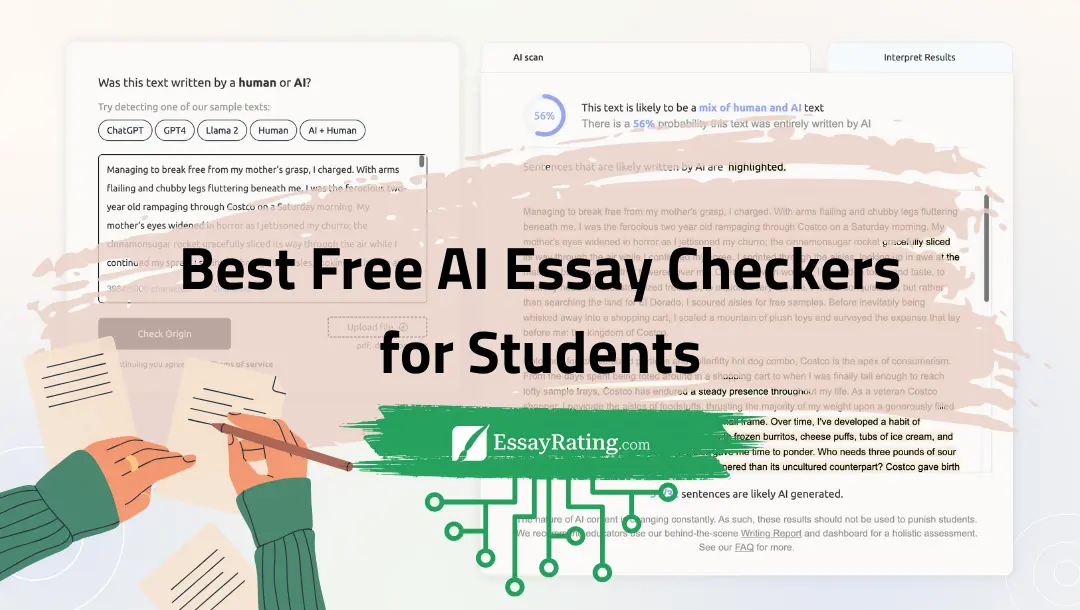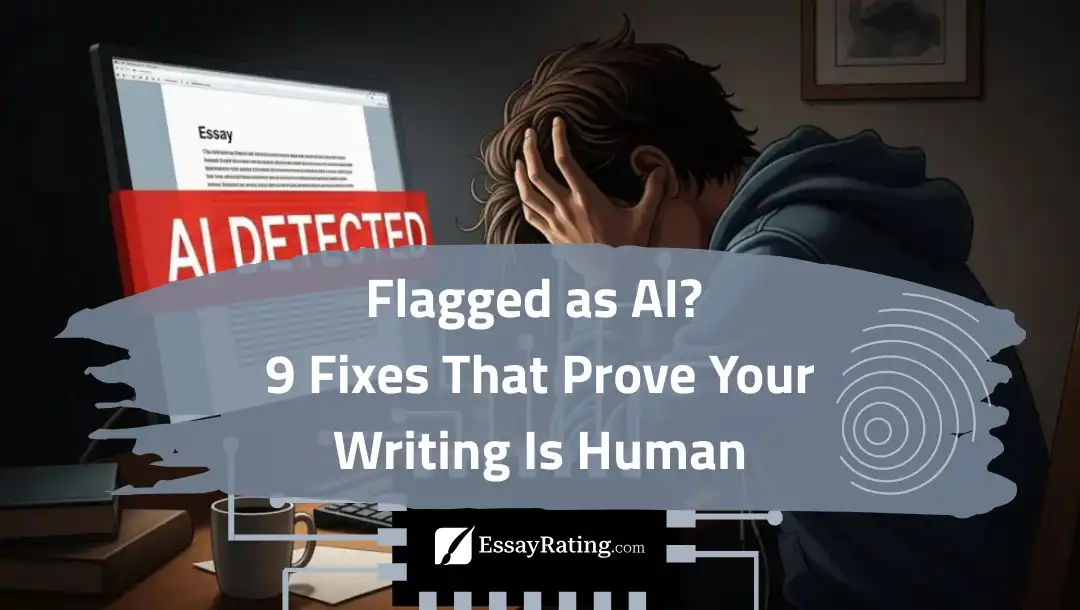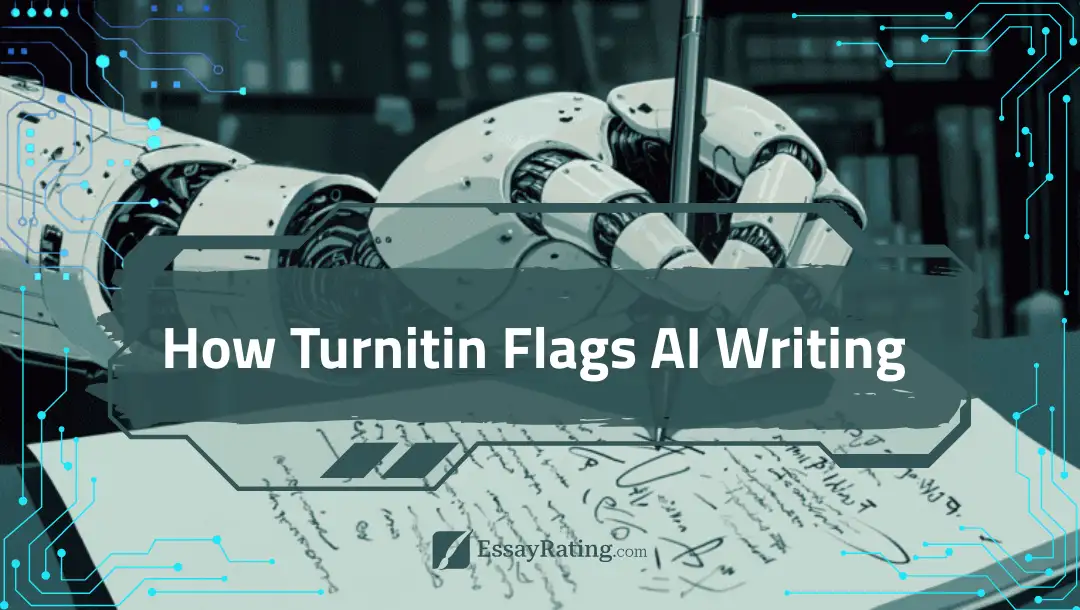How to Cite AI in APA & MLA • Examples, In-Text, and AI-Use Statements
Last updated: September 24, 2025 • 8 min read
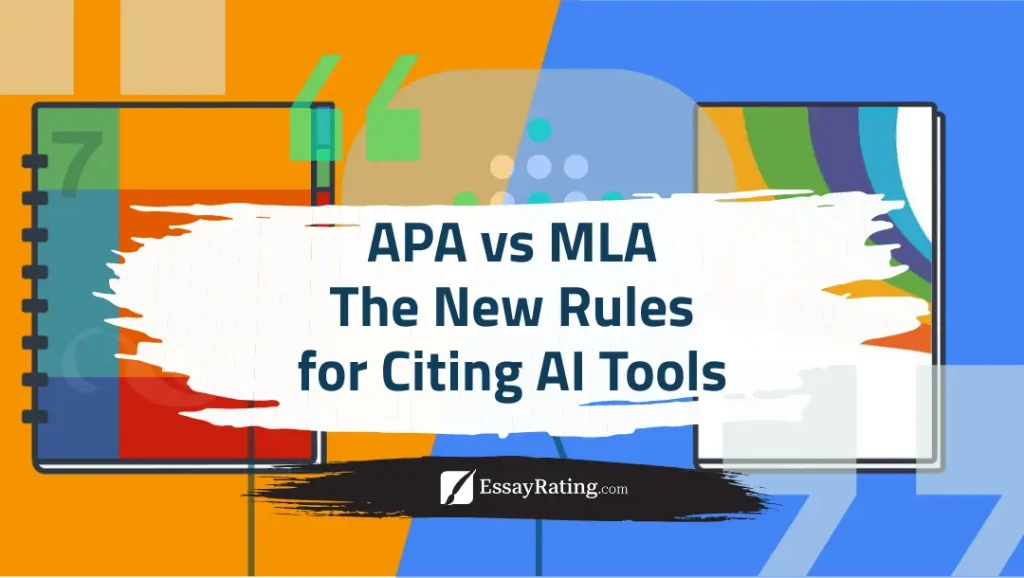
Short answer: You should cite AI tools when their output shapes your content or you quote them. In APA 7, treat the model as software/web app with a retrieval URL and year; in MLA 9, cite it as a website/tool entry. Add a brief AI-use statement in your methods or acknowledgments if your syllabus asks for disclosure.
We’ve reviewed dozens of assignments and editor rubrics this year. Professors don’t want citation acrobatics – they want transparency: when AI influenced your outline or wording, say so; when you quote or closely paraphrase AI, cite it. Below is a clean, copy-and-pasteable set of examples for APA and MLA, plus a simple AI-use note you can adapt.
APA 7 vs MLA 9 — What Changes (at a Glance)
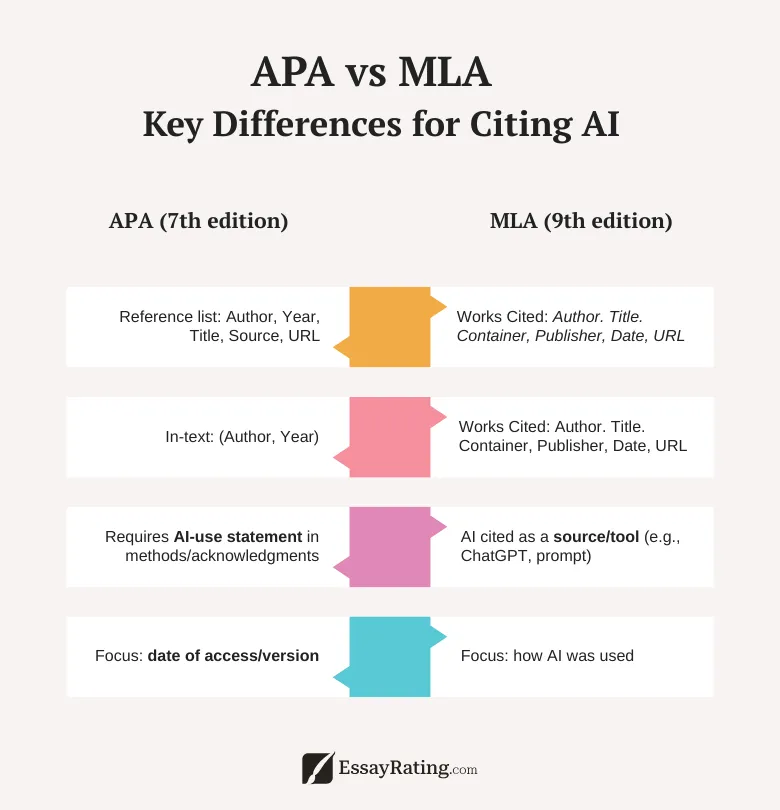
| Element | APA 7 | MLA 9 |
|---|---|---|
| How you list the tool | Software / web app reference entry | Works Cited entry (website/tool) |
| Author field | Organization (e.g., OpenAI) | Organization (e.g., OpenAI) |
| Title | Tool name + model (e.g., ChatGPT, GPT-5) | Tool name + model, italicized where appropriate |
| Date | Year (and date if known) | Year (and date if known) |
| URL | Include a stable access URL | Include access URL; optional “Accessed” date if required |
| In-text | (OpenAI, 2025) | (OpenAI) |
APA 7 • Reference & In-Text Examples
Reference (tool/software):
OpenAI. (2025). ChatGPT (GPT-5). https://chat.openai.com/In-text citation: (OpenAI, 2025)
Quoting a specific AI output (include date/context if your instructor requires):
OpenAI. (2025, September 24). ChatGPT (GPT-5) response to prompt about AI ethics [Large language model output]. https://chat.openai.com/Tip: If you paste an AI quote, introduce it like any source: signal phrase + context (“In a system prompt run on Sep 24, 2025, ChatGPT suggested…”), then cite.
MLA 9 • Works Cited & In-Text Examples
Works Cited (tool entry):
OpenAI. ChatGPT (GPT-5). 2025, https://chat.openai.com/.In-text citation: (OpenAI)
Quoting a specific AI response:
OpenAI. “Response to prompt on AI ethics.” ChatGPT (GPT-5), 24 Sept. 2025, https://chat.openai.com/.Note: For MLA, you can title the specific response (short descriptive title in quotes), then list the tool and date.
When Do You Need to Cite AI?
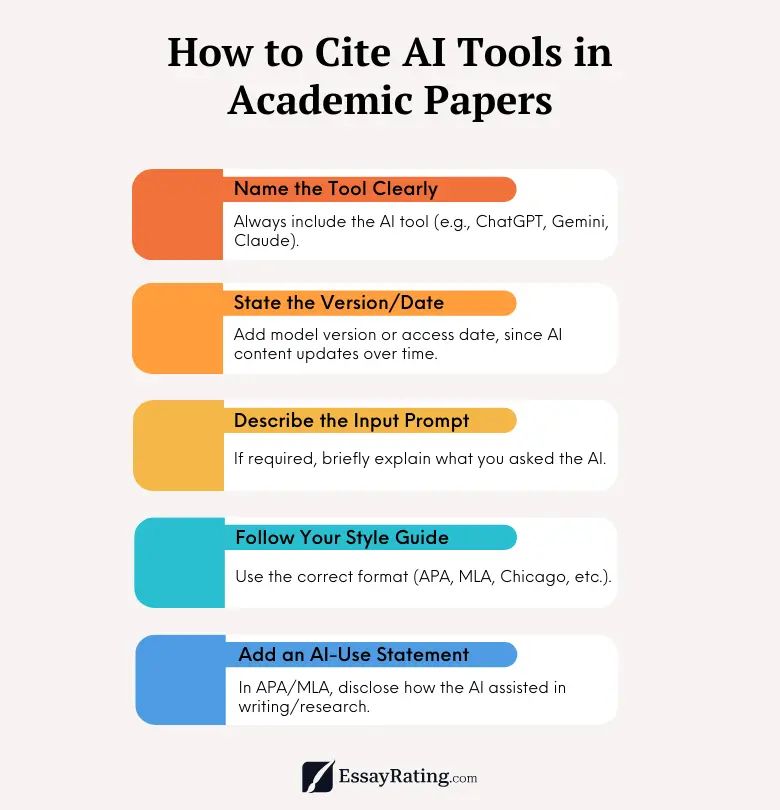
- Quote or close paraphrase: You reproduced AI’s wording or unique phrasing in your paper.
- Substantive influence: AI shaped your outline, argument flow, or specific claims – add a short AI-use note and cite where appropriate.
When AI only inspired brainstorming (e.g., a list of potential topics you later replaced with your own research), many instructors accept a brief AI-use note without a formal reference. Always follow your syllabus first.
AI-Use Statement (Put in Methods or Acknowledgments)
Copy, tweak, and paste – keep it short and honest.
AI-use note: “We used ChatGPT (OpenAI, 2025) to brainstorm questions and refine the outline. All analysis, wording, and final drafting are our own, and all sources cited were read and verified.”
Common Mistakes We See (and How We Fix Them)
| Mistake | Why It’s a Problem | Fix |
|---|---|---|
| Listing the model as a human author | Misrepresents authorship and confuses grading | Use the organization (OpenAI) as author |
| No URL or context | Reader cannot verify or understand the use | Add the tool URL; add date/context for specific outputs |
| Hiding AI assistance | Violates policy if disclosure is required | Add a one-sentence AI-use note in methods/acknowledgments |
| Only paraphrasing AI text | Still may need citation if structure/ideas came from AI | Cite source of the idea and add your analysis |
Do I Cite Images or Figures Generated by AI?
If an AI tool produced an image or figure you include, provide a caption credit and an entry in your bibliography. Keep the wording simple and consistent with your style guide.
APA 7 (figure note example): “Figure created with OpenAI’s DALL·E (2025).”
MLA 9 (Works Cited example):
OpenAI. Image generated by DALL·E from prompt on climate policy. 2025, https://labs.openai.com/.What Professors Actually Look For
They want to see that you did the thinking: sources you actually read, analysis in your own voice, and a transparent note when AI helped. If you quote or closely follow AI wording, cite it. If AI helped you plan, give a short, matter-of-fact disclosure. That’s it — simple, honest, and aligned with academic integrity.
Final Verdict
Keep it transparent and simple. Cite AI when you quote or lean on its output; add a short AI-use note when it helped you plan. Use the organization as author (OpenAI), include a clear title for the tool or response, add a URL, and focus your time on evidence and analysis — that’s what your professor grades.
Disclosure: Some links may be affiliate. We may earn a commission — at no extra cost to you. We only recommend services we’ve tested.
FAQ • Student Questions We Hear Every Week
About the Team
Related Articles
Essay Services You May Like
